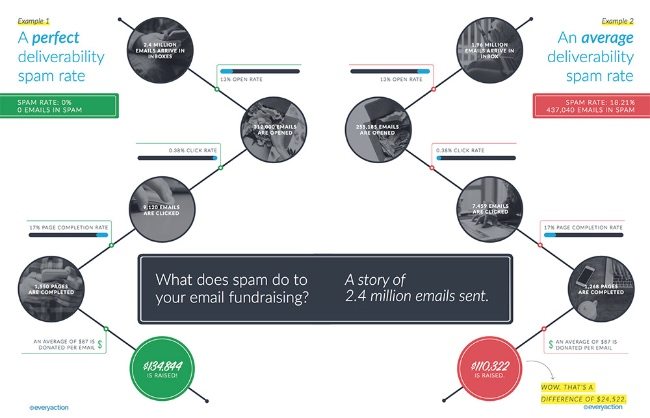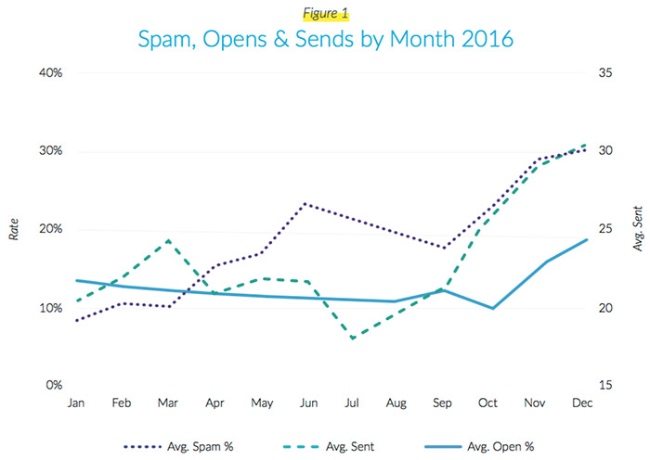This post was originally published here (Nonprofit Quarterly)
The 2017 Nonprofit Email Deliverability Study has been released, a national study in which the email marketing platform EveryAction collects deliverability data from 55 different nonprofit organizations and analyzes the impact of spam and poor deliverability on fundraising practices.
The big takeaway from this year’s study is that being classified as spam is becoming a big problem and hindering nonprofits’ email deliverability rates. If an email service provider (ESP) recognizes that the emails you send are frequently marked as spam, are immediately deleted without being opened or read, or are not engaged with or opened at all, they will likely begin routing your messages to spam or promotional folders, where they may go entirely unseen.
Diminished engagement and soaring spam rates are significantly weighing down nonprofit fundraising potential.
Some of the most common causes for being tagged as spam:
- Making unsubscribing difficult
- Using an out-of-date email list
- Sending irrelevant emails
- High numbers of complaints
It’s important to avoid these symptoms, because once your organization’s IP address has been flagged by an ESP as a bad sender, it might take months—or possibly years—to recover.
How Do Spam Rates Impact Fundraising?
From this study, on average, 18.21 percent of email was delivered to spam folders monthly in 2016. December saw the highest spam rate (30.25 percent) and January, the lowest (8.56 percent). The graph below shows the fundraising losses that occur when your organization’s email is hitting spam folders, using the average 18.21 percent vs. a zero-percent spam rate:

Click-through rates for fundraising emails were down 14 percent compared to the previous year. This metric, combined with a significant increase in spam rates starting in September, were the two main contributors to deliverability losses in 2016.
One vital step toward keeping deliverability rates up is to clear old defunct email addresses from your lists, along with people you are no longer reaching. EveryAction discovered from the study’s findings that about 22.2 percent in email fundraising revenue could potentially be gained by improving email deliverability rates by keeping your email lists healthy.

The report also found from the nonprofits studied that spam rates soared during the fundraising season at the end of the year, and in fact nearly tripled the previous year’s rates, climbing to 23.61 percent from 8.60 percent. The average spam rate also peaked during Giving Tuesday in 2016, with an average of 36.68 percent.
According to 2016 benchmark online giving data, every single percentage point of fundraising emails that are marked as spam could potentially result in a loss of $1,308.85 annually. These metrics further emphasize that it’s more important than ever to ensure your organization is doing all it can to stay relevant, keep its contact lists healthy, and follow ethical email practices.
What Can Else Can Be Done to Improve Email Deliverability?
- Opt-in and Confirmation: Sometimes people make mistakes and mistype their address. It’s now best practice to require new leads to opt-in to your email list, but organizations should also send a follow-up email to confirm that their email address is indeed correct.










